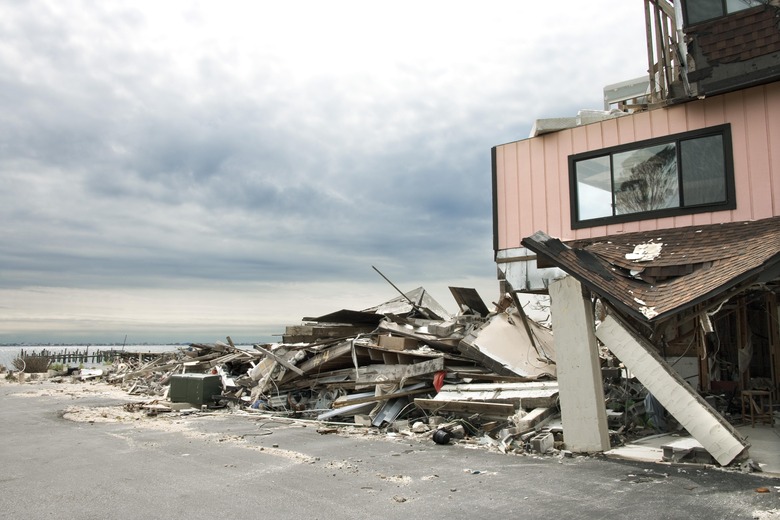How To Handle The Aftermath Of Tropical Storms, Hurricanes & Flooding
We may receive a commission on purchases made from links.
Tropical storms, hurricanes, and flooding are wreaking havoc more frequently than ever before due to the effects of climate change. It's important to know exactly how to stay safe during the weather event and heed natural disaster warnings, but it's also crucial to know how to safely reenter your home, file a claim with the insurance company, and find good resources for your mental and physical health.
Hurricane Ian's widespread impact on Florida and surrounding areas is still being determined, but estimates put the storm damage costs between $100 billion and $120 billion. After search and rescue, those affected will need help in all forms of disaster recovery — from wind damage to flooding and water damage to dealing with insurance companies.
Here's our quick guide to dealing with the aftermath of a major hurricane or tropical storm.
Returning & Reentering Your Home Safely
Returning & Reentering Your Home Safely
Once your community has been given the okay to return, take care to do so safely. The far-reaching effects of these wet-weather storms include: wind damage, general storm damage, water damage, flood damage, roof damage, property damage, electrical and water safety, and more, so it's best to approach this important step cautiously.
Here's what to watch out for when returning to your home after a hurricane:
Electricity, Power & Gas
Most importantly, do not use any lights, power or appliances if there is standing water in your home due to risk of electrocution. If you can turn off your power from a dry location, do so; otherwise, rely on an electrician to turn off your power.
If you smell gas or suspect a leak, turn off the main gas valve, open all windows and leave immediately. DO NOT turn on any lights or do anything that could cause a spark. Contact your gas company, local police or fire department immediately. Do not return until it is safe.
Flooding, Standing Water & Mold
Storm surges bring flooding and standing water, which you should avoid if at all possible. If you must enter a flooded area, wear protective gear, like rubber boots, rubber gloves, and goggles. If you come into contact with floodwater or standing water, wash immediately with soap and clean water.
Mold & Mildew
If you are able to return to your home quickly and safely, dry all you can as quickly as possible to prevent mold and to aid in water damage cleanup. Mold growth can form as quickly as three days and is a serious health hazard. Open all windows and doors to encourage air flow. Wear protective gear, like long sleeves, goggles, long pants and sturdy shoes. Pay particular attention to drying your carpet (if salvageable), wood, drywall, wallboard, and insulation.
How to Dry Your Home & Remove Water to Prevent Mold
If Electricity Is Not Safe
Try:
- opening windows & doors (weather-permitting)
- gas-powered* pumps, generators, or pressure washers
- using fans and dehumidifiers pointed outwards
*DO NOT operate gas engines indoors or in enclosed structures as this can lead to carbon monoxide poisoning
Documentation, Home & Flood Insurance
Documentation, Home & Flood Insurance
If the water has receded and everything has dried out, it's now time to assess the damage (and figure out how to pay for it). Here's a step-by-step guide of what to do next:
- Take photos and video of everything, like the insides of cabinets and closets, before starting cleanup or anything else.
- Take photos of the water line with a tape measure for reference.
- Then, as you begin to clean or remove items, continue to take pictures and video. Not only will your homeowners insurance provider require detailed documentation, you will also be able to reference the photos and videos when rebuilding.
- Reach out to your insurance immediately (have your insurance policy information handy when doing so) to start insurance claims as this process can take a long time.
- Schedule the adjuster to come out as soon as possible, even prior to cleaning.
Recover & Rebuilding
Recover & Rebuilding
The road to recovery will not be easy; take care of your physical and mental well-being first and foremost. Rely on your community: You have a shared bond that is strongest when helping each other. Storm damage repair will take time. Rely on your flood insurance, on the Federal Emergency Management Agency, and on restoration companies to help you recover.
